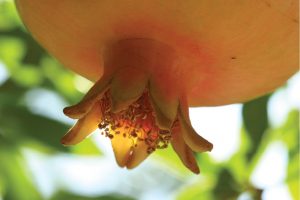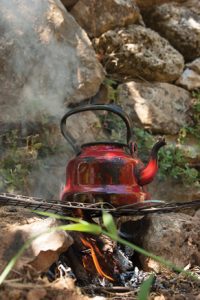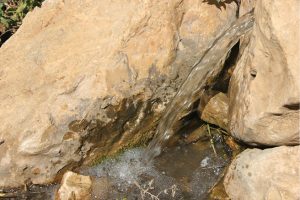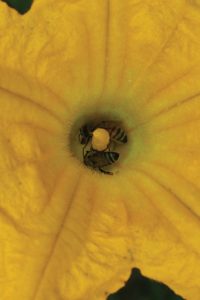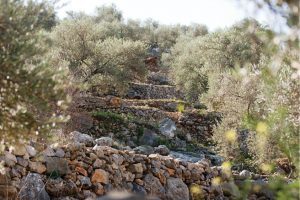By Bassam Almohor
Ein Dara (32.014583°N, 35.173535°E) is around 20 kilometers north of Ramallah and belongs to Ajjul Village. It is a beautiful spring located at the bottom of Ein Dara Valley, a lush evergreen habitat where water flows all year round, offering a sense of freedom to all who roam around the patchwork pieces of cultivated land.
Ein Dara is a picturesque, peaceful, natural, and clean spring. Farmers here plant only organic vegetables: beans, lettuce, eggplant, zucchini, pepper, tomato, cabbage, and cauliflower. Citrus trees are also plentiful: lemon, orange, clementine, grapefruit, even pomelo, and lots of pomegranates and grapes.
The valley teaches you to appreciate colors, thorns, leaves, and the smell of the surrounding beauty: the holy thistle with its purple flowers, or the cyclamen – that lovely flower that endlessly and shyly looks down, living inside pockets of soil in rocks or in the trunks of olive trees. Everywhere you can detect the smell of sage, with its light green color; and the orchids, a variety of them, are short-lived, blooming only between the months of February and April.
The buzzing of insects is like music. It is the symphony of nature, never-ending sounds of grasshoppers scratching their legs, the buzzing of bees, wasps, beetles, and butterflies. Birds, and lots of them. Hear a jay scream, spot a tiny flycatcher, notice the lovely song of a goldfinch, and in the distance, hear a spectacled bulbul.
Ein Dara is located at the end of the dirt road down in the valley. On the weekend, it is quiet – no dust, and no trucks coming down to pump the water for the busy construction site uphill. Farmers plant zucchini, potatoes, and beans; no fertilizers, no hormones, no pesticides, no genetically modified food here. The seeds left over from last year’s crops are saved by the farmers for the next season. Contact one of the farmers and you might get a chance to pick the veggies yourself.
On the left side of the valley, there is a spectacular farmer’s cottage perched on telephone poles and sided to the rock of the cliff. A tiny swimming pool, coated with billboard advertisement canvas, has been dug underneath to cool kids down in the hot summer. The scene is indescribable.
Ajjul Village is an ancient site that goes back some 3,000 years. Ceramic pieces have been found that date back to the Iron Age and to the Persian, Hellenistic, Roman, Byzantine, Crusader, Ayyubid, and Mamluk periods, and finally to the Ottoman era. Visit the old town mosque and take a look at the inscription on the south wall which dates the mosque to 1196 AD. The inscription is in Ayyubid naskhi script.
For more information and guidance, contact Durar Bawatneh: 059 792 5166.
Bassam Almohor can be reached at almohor@gmail.com, 059 753 4681,
or through Facebook: @palestinestreetlife.

